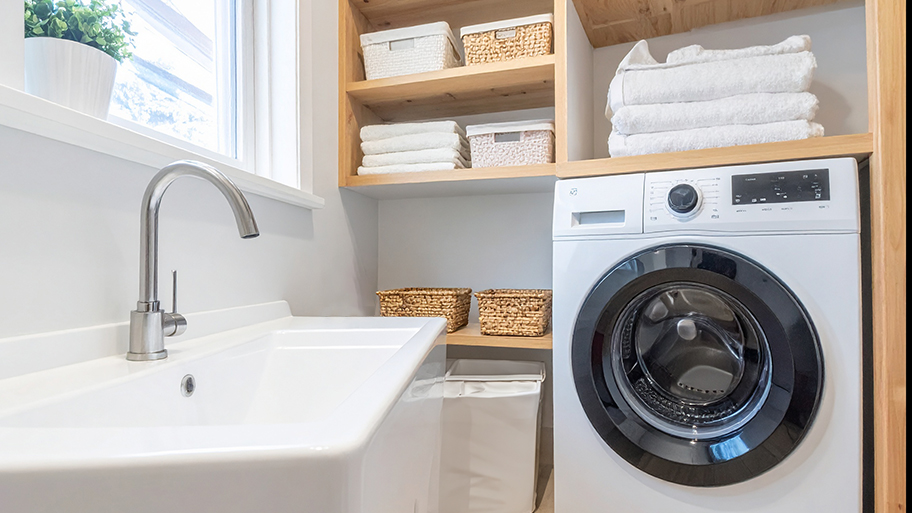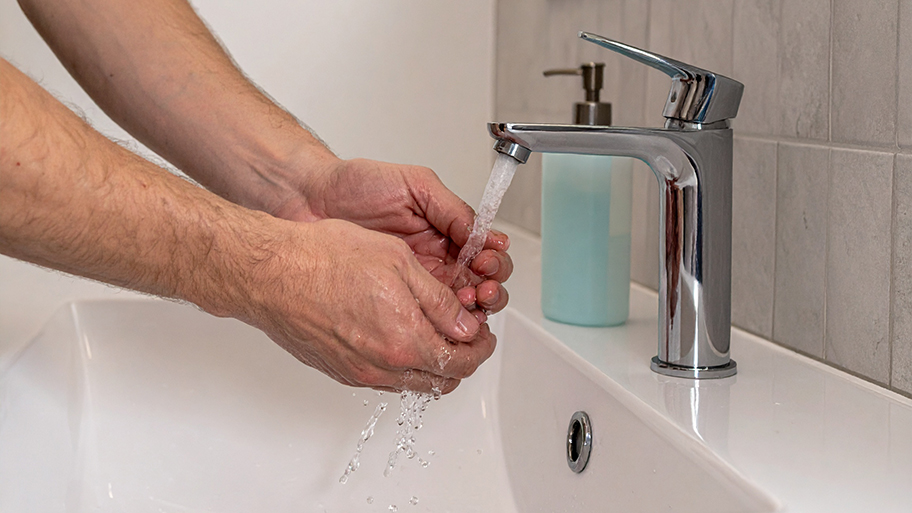
Wondering how much it costs to reroute plumbing? We have the information you need to learn about plumbing vent pipes and cost considerations when installing them.
“Backflow” and “water” are two words that should never go together. This is why we have backflow preventers.


A backflow preventer is a device that prevents water from flowing backward through pipes.
Backflow preventers cost anywhere from $10 to $600 or more depending on the type.
If your backflow preventer leaks, it’s important to call a licensed plumber to investigate the causes.
A pro can help you choose the right assembly and location for your backflow preventer.
Nothing is worse than turning on your kitchen faucet and seeing dirty water pour out. However, backflow happens occasionally and can pollute your fresh water supply. As the name indicates, backflow happens when water, often wastewater, goes in the reverse direction. Backflow happens whenever the pressure in the supply line drops below that in the property’s water system. This can happen if there is a break in the main supply line or if a kitchen faucet backflow preventer is faulty.
Backflow can pose severe health risks as foul water carrying human and food waste, detergent, dish soap, and other chemicals contaminates the clean potable water. To prevent backflow, many homes will install a backflow preventer. While this mechanism usually isn’t a requirement by your municipality, it’s a good idea to have that in place to keep your household water supply protected.

A backflow preventer is a device that attaches to water supply pipes and keeps the water flowing in one direction only. The preventer can also consist of a combination of valves that connect to sewage pipes and sprinkler systems.
Most commonly, simple backflow valves are found on your outdoor faucet or somewhere near the outdoor water source. Inside, you might have a more comprehensive system near your home’s water main line on the street side of the lowest level of your house or in your basement floor drain.
Backflow (or back siphonage) occurs when there’s a change in pressure, such as when pipes freeze or someone taps the fire hydrant on the corner. This causes the water pressure to switch direction and push water back toward the source. A backflow preventer stops contaminated water from getting siphoned back into the supply where contaminated water could mix with clean water.
The good news is that you’ll know right away if your dirty water is mixing with clean because your water will look, taste, or smell funky. Backflow is considered a plumbing emergency and should be reported to the city’s water authority. The city might have to shut down the system for cleaning.
Backflow preventers mitigate the potential for contamination, but not all cities require them. Even if yours doesn’t, it’s a good idea to protect your home against backflow as water contaminated with debris, sentiment, chemicals, metal, and even pesticides is an obvious health concern.
Check with your city for backflow preventer requirements and permits. If required, you can request a permit for less than $50. A licensed plumber can identify the best places to install a backflow preventer in your home and set it up for you.
Backflow preventers are not mandatory in most homes unless you have an irrigation system. However, we recommend you install a backflow preventer so you never have to worry about dirty, toxic water going back into your water supply. The best places for backflow preventers are anywhere your water supply and drain line interconnect. Newer homes sometimes have built-in backflow preventers on certain waterlines. A plumber can tell you whether preventers were already installed through an inspection.
Requirements for backflow preventers will vary across cities and states. Check your local requirements on your city’s website. For most residential areas, here’s where you will typically need a backwater prevention system:
Hoses and irrigation systems (to keep bacteria, sediment, and chemicals used on lawns from seeping into the city’s water supply)
The main water line into the house
Anywhere potable water (drinkable water) connects to non-potable water, such as in HVAC, manufacturing, or outdoor sprinkler systems
The type of backflow preventer you’ll need in your home depends on the hazard level involved with the water use. Most plumbers are familiar with these prevention systems and can help you with a plan to keep your water clean and home dry. They can also help you get a permit if necessary.
The simplest form of backflow preventer is a check valve, most commonly used in low-hazard situations where backflow wouldn’t pose a danger to health, just a funky color or smell. Your indoor kitchen sink backflow preventer and tub backflow preventer are examples of low-risk situations since this water doesn’t cross with wastewater.
Check valves only allow water to flow in one direction. If there’s a change in pressure, the valve closes itself before the water can flow in the wrong direction.
A single-check valve is about $20 at a hardware store and screws easily onto a faucet. However, these valves do not have a safety feature in case the valve malfunctions.
Double-check valves are more common because they offer a backup valve if one fails. Faucet backflow preventers and appliances that might come into contact with chemicals or cleaning supplies—like a swimming pool, darkroom, or washing machine—work best with this type of preventer. These cost about $150.

Outdoor hoses and sprinklers are considered medium hazards and might have a pressure vacuum breaker to protect against backflow. If you have one, it’s probably located above the highest point of the irrigation system, usually near the water source before the water flows into any sprinklers or hoses.
A pressure vacuum breaker has a check valve plus an air inlet. When the air inlet is closed, water can flow through. When the pressure changes, the air inlet will open to stop water from flowing through the wrong way. Pressure vacuum breakers cost $200 to $300.
Backflow preventer devices can leak for many reasons. Here's a breakdown of the most common causes for backflow preventer leaks.
Backflow preventer valves come in all sorts of sizes, typically ranging from 1/2 inches to 2 1/2 inches in diameter. It’s important to know exactly what size and brand your pipes need to prevent leaking.
If your backflow preventer is defective or broken in any way, this could also cause leaks. If you notice abnormal leaking, inspect your backflow preventer device to ensure it’s in tip-top shape. A common culprit for a malfunctioning backflow preventer is the rubber washer that seals the connection. Be sure to replace this washer if it looks deteriorated to see if this easy fix solves your problem.
Sometimes, a sudden surge of pressure and the main line can set your backflow preventer off-kilter. If there's too much pressure built up, the only way for the water to go is out through the backflow preventer, which can cause leaking if it's at maximum capacity.
If debris accumulates in your backflow preventer, this can cause it to leak. Hard water, waste, dirt, and other particles can sneak into a backflow preventer depending on where it's located.
DIYing a backflow preventer installation may save you on plumbing costs, but if you installed your assembly incorrectly, this could cost you big time. Common mistakes in the assembly process include improperly assembling the head of the backflow preventer, installing the device too high above the ground, and vertically installing the device.
Water damage restoration costs can rack up to between $1,300 to $6,100 on average, making it important to have a local plumber assemble any pipes, fittings, or valves if you’re unsure about the installation process. Plumbing repair costs fall around $325 on average depending on the cause of the issue and the repair method.
Reduced pressure zone (RPZ) valves offer the highest protection against backflow. Two check valves work independently to keep the water going in one direction. They are required in many commercial settings like restaurants, but some cities require them for irrigation systems as well.
RPZ valves typically require a certified inspector to sign off on their functionality annually. The cost to install these systems starts at around $1,000.
Your city might require annual inspections on backflow preventer systems, especially if you plan to relocate it, or if it’s connected to an irrigation system. Even if an inspection isn’t required, it’s still a good idea to get your backflow system checked annually and have a plumbing inspection checklist on hand to stay on top of maintaining your plumbing. A licensed plumber will connect a testing kit to make sure it’s working correctly.
Before the first freeze of the winter, winterize outdoor water systems, including backflow preventers connected to sprinkler or irrigation systems. If you’re unsure how to prevent frozen or cracked pipes, a local lawn irrigation company can help safeguard your system for winter.
If you want to ensure that your backflow preventer won't let your pipes down, the best way to do so is by hiring a pro. The person you'll want to contact to get a backflow preventer installed is a plumber near you. Plumbing companies in your area have the skills to correctly install a backflow preventer using the correct assembly and location so that you can feel confident in your home’s plumbing system design.
Before choosing your plumber, it’s a good idea to get at least three quotes from different local plumbing companies—that way, you can choose the company with the best skills, reputation, and pricing.
Xiao Faria daCunha contributed to this piece.
Don?t let them near a drier vent or washing machine discharge tube.
Daniel and his crew, can handle all projects for your property. I have two homes they maintain for me. They have repaired siding, doors, plumbing, electrical, drywall, concrete work, installed appliances, and built a new covered deck. This company offers the perfect combination of quality,...
Very professional, knowledgeable, and wonderful to work with! I ll definitely hire him again!
Very well, found a major clogged upstairs and fixed it with little fuss. Joe and Brendan are rockstars. Would highly recommend these guys for any plumbing needs.
Still not resolved. 11 days just to get repair service, and then ordered the part, and another 2 weeks before they will finish up. Have already spent over double my monthly bill at the laundry mat.
My main issue was fixed in a matter of minutes. I had other odd jobs that I needed addressed in the house. He appeared a little anxious to leave and was a little awkward but a nice guy. He was not able to explain things very well to me but he knew what he was doing. I paid for 2 hours of...
Went quickly, pro repaired a 2" PVC to copper downstairs. Done in an hour or less. Renter's hadn't reported the small leak, Backlund had been out the week before to camera the main line and auger the upstairs toilet. At that time, the eagle-eyed technician noticed a bucket behind the dryer...
I called this company because my newly married kids had recently bought a house and put in new carpet. They had a main sewer line break and sewer water backed up into their basement all over their new carpet. The kids had a major plumbing bill and I wanted to see if the new carpet could be...
In Jan. 2013 Perfect Plumbing replace 150 feet of water line at my mothers house in Council Bluffs. She paid them $14,00.00 in full before the job was completed. They pulled off the job before the trench was even partially backfilled. My Mother spoke with Frank the owner on many occasions...
I moved to the area recently and asked around to find an honest plumber. The guys at the hardware store gave me the name of Joshua Bogardus Plumbing. They came to my house promptly and gave a free estimate. They set up a date for service that week. Two guys showed up and replaced my two...
From average costs to expert advice, get all the answers you need to get your job done.

Wondering how much it costs to reroute plumbing? We have the information you need to learn about plumbing vent pipes and cost considerations when installing them.

The cost to add plumbing to a detached garage depends on several factors, including the type of plumbing and the garage's distance from your home.

Repairing a main water line is an urgent matter, so use this guide to get an idea of how much main water line repairs cost to act fast.

If you're concerned about the water quality at your home, it may be time to install a water purification system. Different types of water purification can offer different benefits for removing debris, particles, dirt, bacteria, and viruses from your water.

Replacing or upgrading plumbing in your home? Make sure you know how to measure pipe size accurately to avoid buying the wrong materials.

Learn how to cut PEX pipes if you need to replace copper or galvanized steel pipes due to leaking, corrosion, or rust. Cutting PEX pipe only requires a few simple tools.